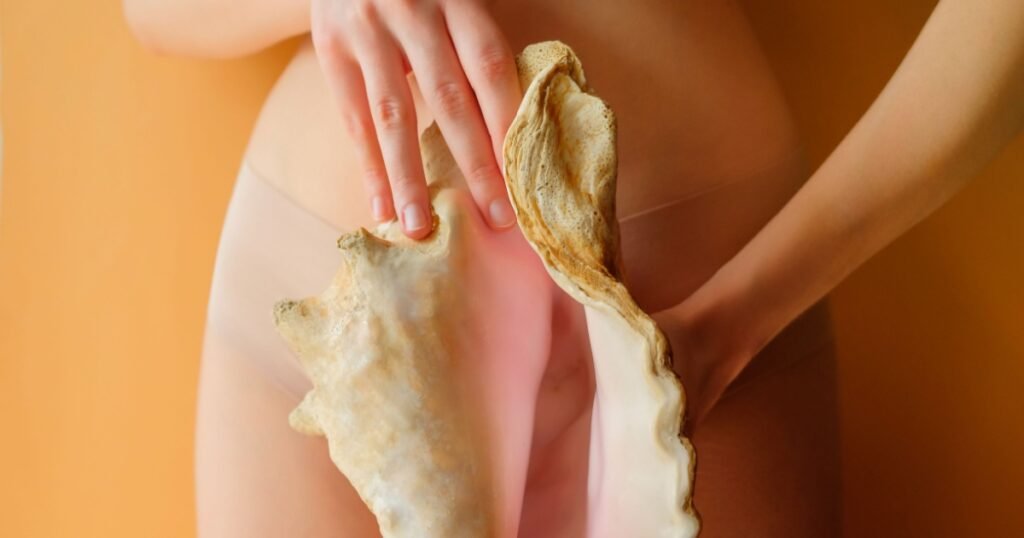There are a lot of things we know about sex, but there is a lot more that we do not know. It seems like a lot of things we think we know, are incorrect. And in this blog, we’re going to debunk and talk about some of these myths. Let me clarify what I mean by these myths. I recently received a very strange query from a teenage girl recently which went something like ‘Does masturbation cause weight gain in female?’
Female Masturbation and Weight Changes
Effects of masturbation on female weight are non-existent. Masturbation doesn’t make women gain weight, nor lose weight. Scientific evidence suggests that the hormonal fluctuations that occur during and after masturbation are temporary, and in fact, sexual activity actually decreases the cortisol levels present in our bodies, that is also known as the ‘stress hormone’ and it can be responsible for weight gain.
There has been so much stigma around women’s sexual health and, moreover, orgasm that it’s considered to be such a taboo. These myths around masturbation are more prevalent and spread around to deter women from achieving pleasure. So many people do not even believe that women can or should orgasm, and linking it to weight gain (targeting body image issues) is another way to deter women from exploring and embracing their sexuality. Hence, until the fight with patriarchy persists, such myths will be prevalent, and what we can do is keep busting them and providing the right and scientific information.
We’ll slowly dive towards a lot of other common things about sexuality and sex that people think are true but they’re not totally true. Ideas like peeing after sex can help with not getting a UTI and much more.
There is just so much we don’t yet know about human sexuality, and how some of the things we thought we absolutely knew were completely off in reality. So, with all the wrong information going around, I’m not surprised that some people believe that there is a connection between female masturbation and weight changes.
The Famous G-Spot
One such thing is the G-Spot or the Gräfenberg spot. I’m sure all of you have heard about the famous G-spot as there are innumerable magazines and internet articles on how to find and stimulate it. Not just that, some doctors are carrying out G-Spot amplification procedures, where they provide injections to enlarge this area. It’s hilarious because there no spot can be particularly called the G-spot. It is the interior wall of the vagina or the circumvaginal or clitoral urethral vaginal complex. People say it is a spot but no, it is not a spot. And calling it a spot is mostly done by male researchers and no people with actual vaginas were included in this research.
So, essentially, based on research and self-report research, it seems that what gets stimulated is the spongy tissue, both the clitoris, and urethral zone, Skeen’s glands, and a whole lot of things that get stimulated and are engorged at that time. So, there isn’t an actual singular spot, it’s more of a bunch of areas getting stimulated together. It’s more of the area where the urethra and the clitoris meet, hence, it’s also called the clitoral urethral vaginal complex, in more scientific terminology.
So, this piece of information is very important because it’s dangerous that doctors out there are doing things for G-spot amplification. And it is very scary that people are going for these amplifications even though there is no particular spot to amplify them down there. And there’s no proof of this procedure reaping results in terms of arousal!
Some people orgasm from this kind of stimulation, and some do not, and that’s completely fine. But it gets problematic when people are made to believe that it is the “proper type of orgasm”. So many frustrated women out there message on forums wondering why G-Spot stimulation techniques don’t work for them, and they start to think that there’s something wrong with them. But in reality, everyone has diverse kinds of things that work for them, and they can focus on what works for them, and not focus on what doesn’t and what the internet says about what should work.
And another thing is, the areas that people call the ‘G-spot’, only get engorged when you’re aroused. Only then do you hit the parts that feel good. But it doesn’t happen with everyone, and there’s nothing wrong with that. Different things work for different people, and this is why especially for women, understanding your body is important, instead of living by somebody else’s experience. Before diving into weight management tips for women concerned about masturbation effects, the women need to understand if their weight is linked to their masturbation practices and find out evidence-backed facts about the G-Spot’s existence, and so on. What works for you, may not work for other people and vice versa. So, having different pathways to arousal and pleasure is alright. Just find out what is working out for you, and ensure the information and knowledge you have is correct.
Nerve Endings & The Clitoris
Now, let’s move towards the clitoris. Apart from women asking questions like ‘Does masturbation cause weight gain in females’, there are plenty of sexual myths women believe about the clitoris too.
I’ve come across plenty of people who say that the clitoris and the penis, both have the same/equal number of nerve endings. And some also believe that it’s not the same and has twice as many nerve endings as the penis. And some people even take it to another level further by specifying the number as well. They believe that there are 8,000 nerve endings in women’s clitoris.
But this 8,000 nerve endings figure has been derived from research that didn’t even involve humans in the first place. Do you know who it was based on? Cows. So, the truth is, after a thorough search process, I found out that there are no studies at all about how many nerve endings there are in the clitoris or even in the penis when it comes to humans. It doesn’t exist. An expert named Jessica Pinn on Instagram, who specializes in clitoral anatomy, has narrowed it down a bit as per a book on bovine health. The book says the source of the approximate calculation of 8,000 nerve endings comes from research on cows and not humans. And this figure keeps circulating among people on the internet and the world in general. People mistakenly treat it as a fact.
And when we dig deeper into these myths, we realize how little we truly know. For instance, there was a popular idea going around at one point that doctors were stimulating women to orgasm in their clinics, and they invented vibrators to cut down these clinic visits for these women who had been diagnosed with ‘hysteria’. Again, not true. These so-called ‘facts’ are not backed by research and data.
Average Size of the Penis
So now, we’ve talked a bit about sexual myths the link between female masturbation and weight gain, the G-Spot, and the clitoris. Now let’s move towards the penis because when it comes to the penis, there are plenty of myths circulating too.
And the first myth about the penis that comes into my mind is the average penis size. I’m sure you have heard facts and figures regarding the average penis size too, like how penis sizes can dramatically differ from person to person. But the real question is, do we actually even know what the average penis size truly is? It’s a good question to ponder about. Research has been done on this but the samples are a little questionable.
Why? Well, a very specific story comes into my mind where researchers got people to come in a tent on a spring break scenario somewhere in Florida, and they measured their penis length. Another weird instance is when a condom company had people measure their own penises and send in their measurements. Hence, I can’t say whether comprehensive research has been carried out whose data can be considered to set an average penis size.
What we’ve been hearing is that the average penis size can be around five to five and a half inches when erect, and there are a few studies that confirm it, but at the same time, these studies do have their limitations.
And to be honest, there’s another thing to think about that when penis size measurements are taken into account, not a lot of men wish to participate in the study. So, what researchers are generally left with are drunk spring breakers or students who don’t mind having their penis measured in a tent.
So, the demographics are all weird, along with whether a trained clinician is responsible for it, or the people themselves? Because if people submit their own penis sizes, there is often a tendency to flex and overestimate their penis size. And also, only the length is measured mostly, and not the girth.
As per research, the girth of the penis matters more to heterosexual women for pleasure rather than length. But unfortunately, and commonly, only the length of the penis is measured. And a lot of studies only focus on the penis length when it is flaccid and not erect. Whereas, it should be done on an erect penis.
Some even connect the penis size with that of their nose, and that’s some weird, silly, and questionable side of research.
Multiple Orgasms in Men and Women
Let’s talk about the refractory period. It’s the time, from minutes to days, when you can’t have more orgasms. People often say, and you see this in textbooks, that if you have a penis, you experience it, but if you have a vulva, you don’t.
And this is why it is thought that women can have multiple orgasms, but men cannot. This takes us back to the 1960s, when the groundbreaking work of Masters and Johnson, who were studying human sexual response before modern technologies came in. And if you dive deep into this, you’ll find there is actually not much data on the refractory period or bounce-back rate, and it’s not understood properly.
The fact of the matter is that if the refractory period does exist, then it is tied to the ejaculation specifically and not orgasms. As ejaculation and orgasms are two different things. There are even people who have had many, many orgasms without ejaculating through tantric meditation practices. And there are archives based on sexual behaviour that specifically talk about male multiple orgasms.
One interesting thing I’ve found from talking to people about their sexual experiences is how much they vary, more than research suggests. Popular human sexuality textbooks often present the male sexual response cycle as a straightforward process: excitement, plateau, orgasm, and resolution—one and done. But men’s experiences can be much more varied. For instance, some men struggle to have an orgasm but can have multiple back-to-back once they do.
Some men can have multiple orgasms, but only if the experience is very exciting, like a threesome or group sex. Others can have more but often stop at one because they’re tired. The work of orgasm researcher Nikki Prowsey shows that what we think we know about orgasms is usually wrong. Even defining multiple orgasms is quite tricky.
How do you define multiple orgasms? One after another, or with a gap in between? Definitions vary, and people have their own ideas. For example, I once did a Twitter poll asking how many people are needed for something to be an orgy, and the answers were all over the place. There are people who consider a threesome to be the same as an orgy, and that in itself speaks about the significance of doing proper sex research.
__
It is important to know that people have their own ideas and definitions about things. For instance, some people define incest differently; some include step-siblings even though they’re not blood relatives. This shows the need for asking the right questions in research.
Bias is inevitable in any study. But recognizing our biases gets us closer to the truth. This approach is common in qualitative research but should be used more in quantitative research too. Personal experiences really shape views on sex, like how two men can have completely different and opposite opinions on ejaculation in porn.
For example, when it comes to the ‘where do you cum’ study, different people opt for different things. For some it is during penetration, for others, it might be on their partner or any other part of the body. And you know what? Some even like to cum looking at themselves in the mirror and some cum on the mirror itself.
Peeing & Urinary Tract Infections (UTIs)
Another widespread misconception people believe along with believing myths like ‘Does masturbation cause weight gain in female’ that people have is that peeing after sex brings down the chances of developing a urinary tract infection. And sadly, this information is found all over the internet, saying that after-sex urination washes out the bacteria, therefore, it brings down the possibility of infections. So, they’re suggesting people to urinate post-sex.
So, what is the truth behind this? Is UTI really prevented by peeing post-sex? The fact is there isn’t any evidence out there in the research literature about this. Some medical websites out there confirm the same and yet promote peeing after sex because this idea is deeply ingrained in us. Even I had a phase where I believed in the same and practiced it, and also preached it to others.
Then in a conference, I learned about the actual biology behind it and learned that peeing after sex is of no use as by that time, if there are any bacteria, it will already be up there in the urethra. I was in denial about it at first, but when I stopped peeing after sex, I noticed that I wasn’t getting any UTIs. And that’s when I really dived into research about the same.
It was interesting to see my own journey, where even with clear biological evidence, I resisted because of my experiences. I also received the angriest feedback, with people saying I was wrong and not to tell them what to do. My message was simply that if you don’t want to pee after sex, you don’t have to. It sparked strong reactions because many hold firm beliefs about peeing after sex. This shows how deeply ingrained myths can be, making us resistant to contrary evidence.
We hear myths so often that we assume they’re true, making them hard to debunk. When researching peeing after sex, I couldn’t trace its origins. References led to dead ends, and there’s no evidence supporting it.
Sometimes, scientific articles reference something, but tracing it back reveals nothing, like a game of reference telephone. This shows the importance of thorough research to uncover the truth.
The Role of Pubic Hair
The conversation and myths around pubic hair is yet another questionable topic along with topics like ‘Does masturbation cause weight gain in female’. So, what’s the use, role, and objective of pubic hair? And does grooming pubic hair impact risks for STI (sexually transmitted infections) in any way? The reason I’m exploring this topic is because when it comes to the functionality of pubic hair, there have been a few myths going around. Some say that it exists because it acts as a protective cushion while having sex.
Also, some people believe that the role of pubic hair is to contain genital scents that are supposedly pleasing & arousing in an erotic way. That’s not it. Some say that shaving or getting rid of your pubic hair can lead to more frequent STIs, while some contradict it by believing that pubic hair removal actually brings the risks down. So, the opinions and beliefs about pubic hair are all over the place.
So, what do we know about pubic hair’s purpose and its link to STI risk? Theories on pubic hair’s purpose are speculative. We can’t prove any single theory because we can’t trace evolutionary changes exactly.
Pubic hair removal has reduced pubic lice, but its impact on STI risk is complicated. Removal can cause skin abrasions, increasing STI risk, but studying this properly is challenging and unethical.
We rely on correlational data, which can’t establish cause and effect. Different sexual behaviours among those who remove their pubic hair add to the complexity. So, while we have ideas and some data, the true impact remains unclear.
Are Human Beings Naturally Monogamous?
One of my favourite studies involved scanning the brains of monogamous and non-monogamous men while they viewed sexual and romantic images. They found that everyone’s brains reacted the same way to sexual images, but for romantic images, monogamous men showed more reward-related brain activity, while non-monogamous men had more brain activity related to thinking rather than feeling rewarded.
What this essentially suggests is that our brains might be wired differently for monogamy and non-monogamy, similar to how voles’ mating behaviours can be changed with hormones. However, it’s not just about hormones but also about how our brain’s hormone receptors work and can be based on life experiences.
The study indicates that our experiences can shape how we respond to romance and sex. With hormones like oxytocin, it’s more about increasing the likelihood of certain behaviours rather than directly causing them.
Let’s Talk About Testosterone & Oxytocin
People often think that avoiding sex and masturbation boosts testosterone levels, but that’s such a huge misconception. Hormones don’t directly cause behaviours; they just make them more likely. For instance, injecting testosterone into a rat might increase mating chances, but it doesn’t ensure immediate action. High testosterone doesn’t necessarily mean higher sexual desire and low testosterone is linked to reduced desire, but the normal range isn’t clearly connected.
Oxytocin is also misunderstood. People hope it will fix relationship issues, but most research is on animals, and human studies are often limited. Oxytocin’s effects depend on context—it might increase trust in a positive setting but could worsen feelings of distrust if you already have negative perceptions. So, using oxytocin won’t magically improve relationship problems; it might even make things worse.
Media labels like “love hormone” for oxytocin or “male sex hormone” for testosterone simplify how hormones really work and lead to misconceptions.
The Connection Between Disgust & Sexual Arousal
One more thing I wanted to touch on along with topics like ‘Does masturbation cause weight gain in female’ is the link or connection between disgust and sexual arousal. Some studies show that being aroused can actually reduce feelings of disgust, making things that seem gross seem less off-putting. On the flip side, if you’re already feeling disgusted, it can make arousal harder to achieve.
In a study, it was found that if people are reminded of something disgusting before watching erotic content, their arousal levels drop. It seems like disgust can actually dampen or lessen sexual desire. Well, there are a lot of variations when it comes to people and their sensitivity to disgust—some are easily grossed out, while some don’t get easily grossed out, and that can impact their sexual experiences.
There’s also this interesting twist where disgust itself can become a turn-on for some people. It’s like the more forbidden or gross something is, the more it can become a kink. It’s kind of like how some people develop fetishes for things they once found repulsive.
And it’s not just a human thing—there’s research on animals showing similar patterns. For instance, rats can be conditioned to get aroused by certain smells if they’re present during their first sexual experiences. It’s a lot to unpack, and it shows how complex our responses to disgust and arousal can be.
__
Does masturbation cause weight gain in female, does the G-spot exist, are there really 8,000 nerve endings on the clitoris, what is the average size of the penis, are multiple orgasms possible, what’s the role of pubic hair, are we naturally monogamous, and more such questions, myths, and misconceptions were covered briefly in this blog.
Stay tuned for more in-depth blogs surrounding sexual myths, if you’re interested in the science of sex and want to learn more about it.
Thanks for reading!





